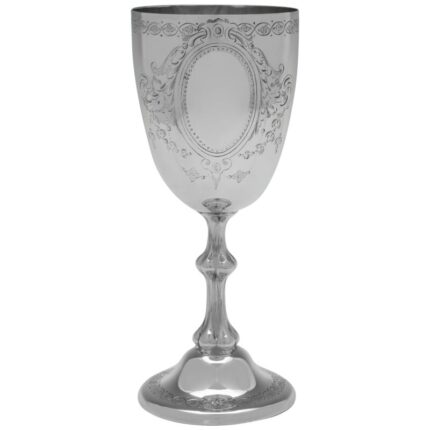The magnificent and rare candelabra showcase intricate hand-chased and hand-chiseled workmanship. Boasting seven candle arms adorned with ormolu foliate motifs, gracefully twisted and embellished with naturalistic acanthus leaves, flowers, and berries. The cups at the ends of the arms are adorned with elaborate banded filigree edged bobeches, radiating timeless beauty and refinement. On the base are half crescent moon’s, symbolic of the Turkish crescent moon, as these were made for the Turkish court.
What is truly beautiful are the meticulously hand-chased and hand-chiseled patinated bronze ostriches, which exhibit an astonishing level of detail and life-like appearance. The majestic ostriches exude elegance as they seemingly support the circular ormolu mid flare beneath the primary arms of the candelabra. Their heads are adorned with an openwork ormolu decoration of enchanting tassels and pearls that create a cascading and interlacing effect. They stand resolutely atop a splendid round ormolu plinth accentuated by draperies, bows, stars, and a rush, exuding the distinctive charm of the Louis XVI style. Notably, the ostriches possess a highly coveted patina, while the remaining ormolu elements gleam resplendently. The central ormolu stem showcases delicate striations and is encircled by a spiraling vine motif, further enhancing its allure. Countless flawless details abound, attesting to the masterful artistry employed in their creation.
François Rémond established himself as one of the finest bronziers, rivaling even his esteemed elder, Thomire. In terms of historical significance, the original ostrich candelabra were initially delivered in 1782 to the second Turkish Cabinet of the Comte d’Artois at Versailles. Subsequently, they were confiscated during the Revolution and preserved by the Temporary Arts Commission in 1794. Later, they were transferred to the Hôtel de l’Infantado in Paris by the end of 1795. Noteworthy mentions include their presence in the Tuileries, the Empress’s apartment in 1807, the Grand Cabinet of the Emperor in 1810, the sacristy of the chapel in 1816, the King’s waiting room in 1833, and the Salon du Conseil in 1855. After being relocated to the Mobilier National in 1871, they were ultimately placed in the Louvre in 1901 before finding their current residence in Versailles on November 20, 1912. In 1971, they were prominently displayed on the fireplace in the Queen’s noble salon, emanating their undeniable grandeur and historical significance.
-
Creator:Emmanuel-Alfred Beurdeley(Sculptor)
-
Similar to:François Rémond (Sculptor)
-
Dimensions:Height: 30 in (76.2 cm)Diameter: 18.5 in (46.99 cm)
-
Sold As:Set of 2
-
Style:Louis XVI(In the Style Of)
-
Materials and Techniques:BronzeOrmoluGiltHand-CarvedHand-CraftedPatinated
-
Place of Origin:France
-
Period:1870-1879
-
Date of Manufacture:1870
-
Condition:GoodWear consistent with age and use.
-
Seller Location:New York, NY
-
Reference Number:Seller: LU919534531162



















































Reviews
There are no reviews yet.